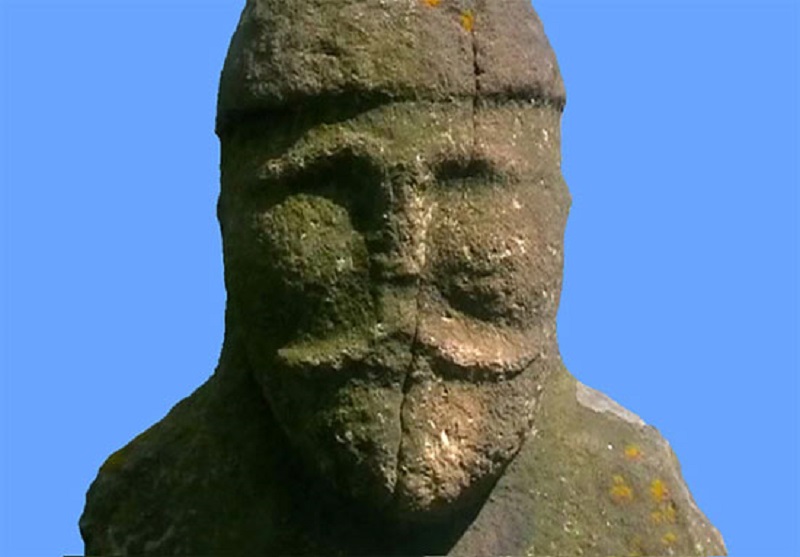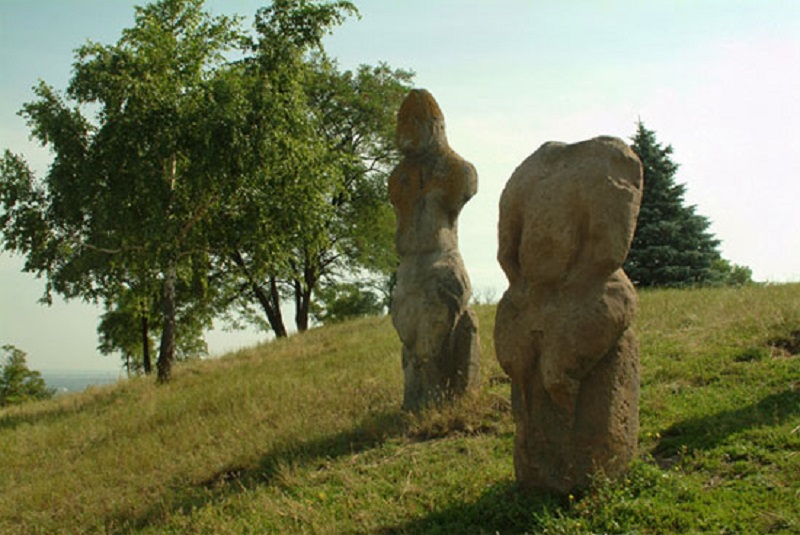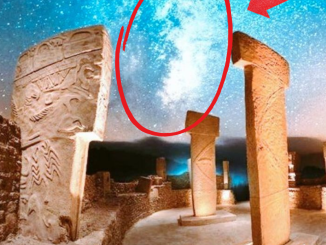The Polovtsians (derived from the Ukrainian word polovtsy, meaning blond) were nomadic warriors of the Eurasian steppes during the Middle Ages. In what is now Ukraine, the Polovtsians came into conflict with Kievan Rus, as famously depicted in Alexander Borodin’s opera in four acts with the prologue, Prince Igor. Although the Polovtsians were an influential force in the 11th and 12th centuries, Mongol invasions in the 13th century broke their power and forced them to migrate west. One of the material cultures left behind by the Polovtsians were countless anthropomorphic statues made of stone or wood.
The production of anthropomorphic statues was not unique to Polovtsian culture, but probably belonged to the broader cultural scope of the steppes. Such statues have been created since the Neolithic period in the 4th millennium BC and can be found throughout Russia, Ukraine (especially in the eastern regions), Germany, the south Siberia, Central Asia and Mongolia.
A Polovtsian statue from Luhansk, Ukraine. Photo source: Wikimedia.
Polovtsian statues include both men and women. Standing male statues are often depicted as warriors ready for battle. Thus, a warrior statue is often shown as wearing a Ruthenian helmet or (more rarely) a helmet made of fur or metal plates, two oval breastplates on the front, a sword and a bow, a quiver of arrows and a whip. In addition to military uniforms, warrior statues also have everyday items such as knives, flints and combs kept at their belts. In terms of clothing, the warrior statue will be depicted wearing a shirt, pants, kaftan, high boots and belt. Interestingly, the statues wearing hats are meant to represent wealthy members of Polovtsian society. These statues are depicted as sitting, with sacks, and without weapons except knives. The objects carried by these statues show that elite men achieved prominent positions in society not through war and military might but through animal husbandry, trade, and commerce. trade and tax collection.
Polostvian statues. Source: BigStockPhoto
As for the statues of women, they are often depicted wearing elaborate clothes and hats. Furthermore, many ornaments such as earrings, necklaces and amulets can also be seen on these statues. Like the male statues, everyday objects were also worn at the waist. The iconic feature of these female statues is their bare breasts. It seems that this image symbolizes strength and immortality. Like the male statues, the female statues have both standing and sitting styles. The former were said to be the wives of warriors, while the latter were said to be the wives of wealthy Polovtsians. Although the female statues represent the wives of famous Polovtsians, there is one statue depicting a female warrior.
Although there are many different types of Polovtsian statues, one of the greatest mysteries about them is that they all appear to be holding some kind of container under their stomachs. The vase can come in many different shapes, including plates, pitchers, cups, and bowls. Just as these vases come in many different shapes, there are also many suggestions for how they were used. For example, they may have been urns to symbolically hold the ashes of ancestors, or sacrificial offerings, or ritual objects in which souls could be enshrined.
Example of a Polovtsian statue holding a vase. Photo source: Hermitage Museum
Even though these statues have been around for centuries, exposure to the elements is taking a toll on these objects. Therefore, the preservation and protection of Polovtsian statues must be undertaken by archaeologists. However, there still exist many problems such as lack of awareness and lack of legal regulations to solve them. However, these obstacles can eventually be overcome and the Polovtsian statues can be preserved and protected for future generations.





